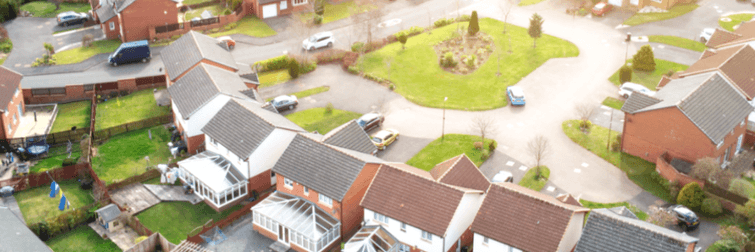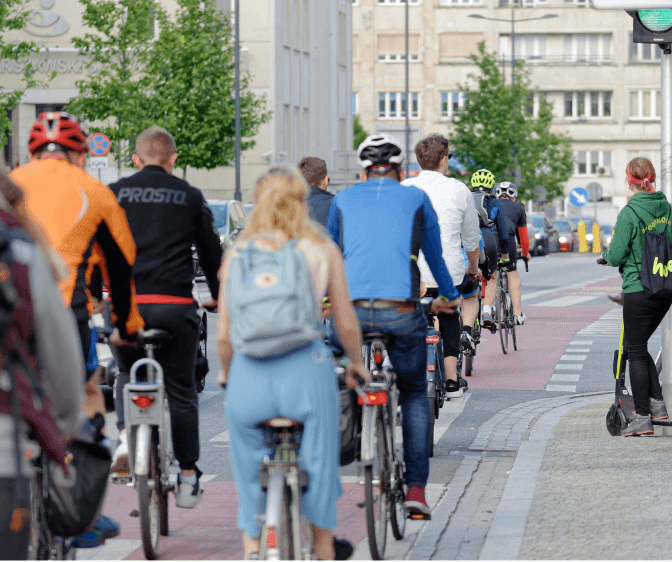
blog: Garden Communities – learning from the past to deliver better future places
Friday 30th April 2021
The Garden City movement came about at the end of the 19th century. It was based on Ebenezer Howard’s ideas for developing places that bring together the benefits of the countryside with those of urban areas.
Skip to the 21st century and there has been something of a renaissance of the concept in the UK – repackaged variably as Eco Towns, then Garden Communities, Towns and Villages but still connected to urban areas. They are touted as one solution to the UK’s forecast housing shortage.
By strategically planning for a mix of land-uses at a larger scale, funding infrastructure differently, and delivering it at pace with new homes; proponents believe that longer-term stewardship, higher quality homes and more sustainable places can be delivered. However, work by the Town and County Planning Association, Transport for New Homes and others has highlighted that the outcomes in many locations are not living up to the aspirations of the original visions.
There is a real danger that the 21st Century Garden Community movement builds places that deliver the exact opposite of what Howard had in mind:
- Places that lock in the isolation of the countryside and traffic congestion of urban areas.
- Places with limited landscaping and limited access to quality green space for recreation.
- Car-dependent places that promote sedentary lifestyles and create air pollution.
- Places with few local facilities or job opportunities in high-value growth sectors.
So, what should successful 21st Century Garden Communities truly look like, and what might this tell us about future cities?
Density makes us happy (within reason!)
For the original Garden City movement (very!) high density was at the core of the ills that cities created at the time– slums, disease, ‘moral corruption’ to name a few. After successive decades of delivering lower density urbanisation on the edges of established towns and cities, we now know that higher densities can also bring vibrancy and enough demand to support shops, local facilities and public transport.
Howard’s fear of density lingers on in the UK. Too much new development, including 21st Century Garden Communities, is delivered at densities too low to support the local services that help to ensure communities are cohesive, low carbon, well-connected and happy. Houten in the Netherlands – an exemplar of a ‘garden town’ on the edge of Utrecht – delivers open spaces, mixed uses and excellent transport services at around 50 dwellings per hectare (well above the 35 dph typically assumed for new development in the UK).
In a future where we are legally mandated to cut our carbon emissions to net zero by 2050, we cannot rely on electrification of transport systems alone. We think cities of the future must deliver more of what people want to do locally, so that they can be accessed on foot and by bike. This means delivering them at reasonable density with mixed uses.
Design for people (the cars won’t mind!)
At the core of the Garden City movement was a view that existing cities were failing the people that lived in them. After decades of reshaping towns and cities around the car, many people have responded by structuring their lives around car ownership – with vehicles becoming an ‘extension of self’ for some. This thinking became lost in the rush to accommodate the perceived freedom of universal car ownership during the latter half of the 20th century. Consequently, our towns and cities have been badly damaged, with significant impacts on quality of life and life expectancy.
Garden Communities need to learn from this. Key principles that we think can support future city design are not technology-driven, or particularly innovative – just fundamentals many of us learned as students of Geography or Urban Planning subjects and that we know from professional experience work well:
- It should be easier, quicker and more pleasant to walk and cycle for local trips than it is to drive.
- Everyday facilities must be nearby to facilitate this level of access, and roads with a primary purpose of moving private vehicles should ideally be not seen and not heard.
- Car parking should not be outside the front door, or possibly even in the street, so that it is quicker and safer to walk to nearby bus stops.
- Urban design instead needs to consider kerbside uses – reflecting the impact of home deliveries and ride hailing technologies in transforming the way people shop and travel in towns and cities.
Vauban in Germany is a great example of a place that puts these ideas into practice and where car ownership is lower than surrounding areas, with only 16% of trips being made by car. Despite vocal resistance from some quarters, UK research suggests that most people support such measures. The cities of the future must be designed around people, and facilitate human-powered movement through high quality and vibrant streets.

Don’t forget to join it all up
The original Garden City movement clearly recognised the need to connect new places quickly. The principle of providing high quality links to the established places where people wish to travel, and by modes other than the car, is of crucial importance today. Many Garden Communities established to-date have not been well-connected to the places where people want to go.
It may seem obvious to some, but people will only walk, cycle and use public transport in large numbers if it is quicker and more pleasant than driving. Therefore, transport infrastructure for Garden Communities should prioritise public transport links that have ‘tram-like’ levels of priority to nearby settlements and segregated cycle links. This is one area where the visions for Garden Communities and future cities particularly overlap. With a growing population and largely fixed road capacity within urban areas, we have to make the most efficient use of the infrastructure that already exists. This means the cities of the future will need to give more space to walking, cycling and public transport, connecting the new infrastructure from new Garden Communities to the centres.
To find out about ITP’s experience in delivering great places, influencing travel behaviour in new and established settlements, and how we can help ensure growth is located and connected sustainably please get in touch.
